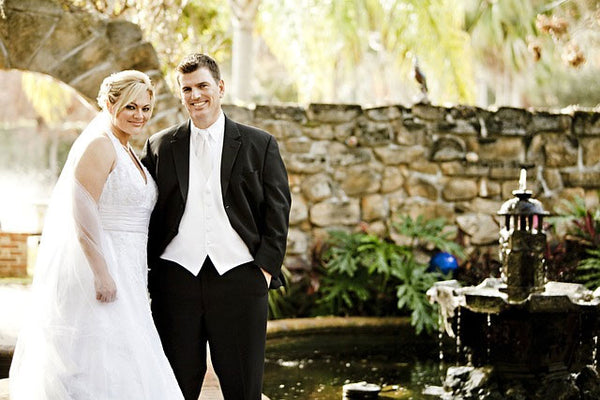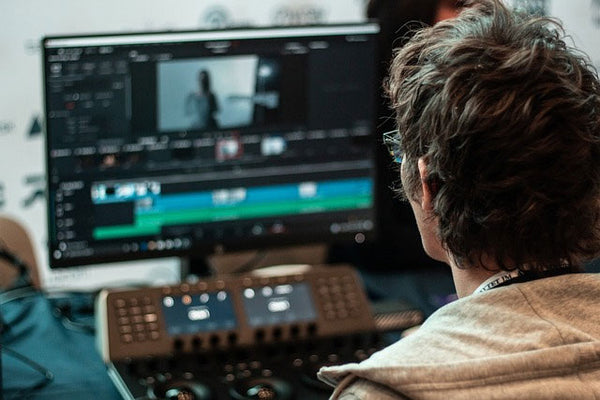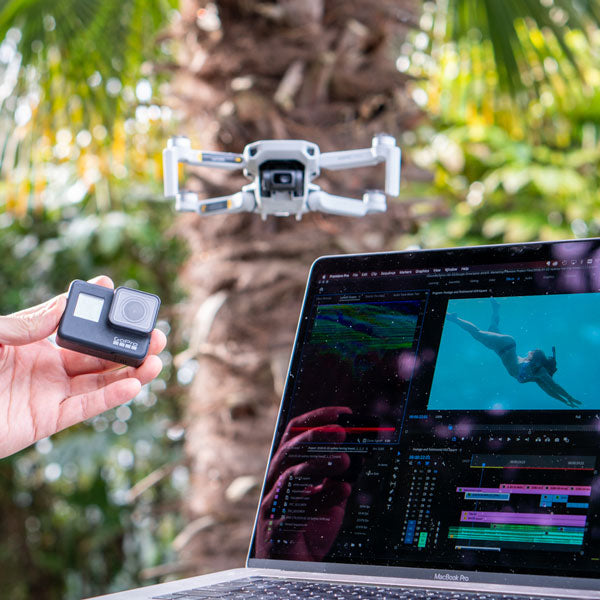
Are you a frequent traveller? Someone who is always looking for a new adventure and touring really cool places? Odds are that you’re also someone who loves capturing those moments!
Filming your adventures can be a fun detail to travelling, but it definitely comes with its own set of challenges. When travelling, you’re often exposed to constant movement and fast-paced environments. This is why utilizing effective filming techniques can enhance yours and your audience’s cinematic experience and the overall quality of your videos.
There are many tips and tricks under the sun that can help develop your filming skills, and most times, these tips and tricks will also make the editing easier, your footage more clear and your adventure more enjoyable.
In this blog, we’ll explore how specific shots play vital roles in crafting travel videos. Through reading, you’ll begin to understand the importance of underwater shots, slow motion shots, sunrise and sunset shots, b-roll shots, drone shots, and time-lapse shots!
Underwater Shots

Shooting underwater footage is a top-tier filming technique for travel videos! This is simply because they showcase remarkable perspectives and offer a variety of vibrant colours. Underwater shots enhance the overall visual appeal to audiences and add excitement to one’s video.
The visual contrast of underwater footage comes from, as mentioned above, vibrant colours. The tranquil blue, light and dark shadows, and the colours of different marine life are all examples of this.
Unique perspectives also come from the visuals of marine life from underwater footage. We often see travel videos taken on land, with other humans; all activities and destinations that are familiar. The ocean and being underwater is not familiar. Therefore, when videographers capture themselves swimming alongside sea turtles, or simply the waves from the below, these types of shots offer a refreshing viewpoint that is engaging and captivating.
Two tips to follow when filming underwater is to shoot a variety of shots and to follow the action. Film medium and close-up shots of different subjects, while maintaining motion. Hold your camera still and allow the subject to swim in and out of the frame gracefully to avoid shakiness or instability of your camera. Film different angles, with different lighting to give yourself or your editor different options for future editing.
Slow Motion Shots
Slow motion videography is fascinating and just as crucial for creating exceptional travel videos because it emphasizes details, showcases motion, enhances cinematic style, conveys the perception of time, and essentially engages the audience.
Slow motion is a traditional filming technique used in videography. It makes a moment in the film clearer and sometimes more dramatic. One could use slow motion in different situations. It’s perfect for scenes with many fast motion activities such as running, driving, cliff jumping, etc.
4 Tips for How to Use Slow-Mo
- Motion: choose a subject with a lot of movement such as a waterfall. If you have a nice landscape but there is no action or motion to be seen, you can create a high speed movement just by doing something as simple as skipping rocks or jumping in the lake.
- Lighting: Lighting is crucial when filming. For slow motion, the brighter the better. More light will result in a less blurry video. Keep an eye out for flashing lights when shooting indoors and try to use as much natural lighting as possible.
- Steady: For best results, keep the camera as steady as possible. The most effective way to ensure this is by resting your camera on a steady surface or using a tripod.
- Practice: Make sure to practice your shot a few times, especially if it involves moving or panning the camera, or especially if the moment is only going to happen once.
Nowadays, people prefer to use their smartphone’s camera. However, we can’t forget that DSLRs still exist and many still prefer to use them for that much better quality.
Remember, the golden rule is that you never want to end up with a video clip that has a frame rate lower than 30 fps (frames per second). Therefore, if you record at 60 fps, that means you can slow down your video by up to 50%.
Sunrise and Sunset Shots

Where the sun meets the horizon, filmmakers find their best creative canvas for cinematic masterpieces. In other words, don’t leave before the magic happens, and the magic is in sunrises and sunsets!
Filming during sunsets and sunrises is a technique that offers, inevitably, the aesthetic appeal which creates visually stunning scenes. They also provide and atmosphere and mood that conveys an emotional impact.
Cameras don’t always effectively capture the variation in brightness and high contrast caused by direct sunlight. This can potentially, and most likely will, lead to botched highlights and shadows. Your videos will almost certainly be over-exposed in the sky (too bright), and under-exposed in the shadows (too dark).
Oftentimes, the best sunset or sunrise colours come out when the sun isn’t present. It would be beneficial to wait to take your videos until after the sun sets or before the sun rises.
B-Roll Shots
What exactly is B-roll? Well, it actually originates from the early days of film. B-Roll is the supporting footage that enhances your video through storytelling. It’s often used as an introduction or in-between different parts of a video. It provides context and atmosphere, it facilitates seamless transitions, and again, similar to the other techniques, it enhances the overall visual appeal.
An example of B-Roll would be if you filmed on the airplane, on the way to your destination. This is a great way to start a travel video and to warm up your audience. You can walk onto the plane, sit down on the plane, stow away your luggage, hold your passport, look out the window, etc.
There are many ways to get B-roll footage even outside of the plane (you could film B-Roll in a car, on a boat, etc). Get creative, produce variety!
Not sure where to edit your b-roll footage into your travel video??
Leave it up to Spivo's detailed and creative Video Editors to do it for you!
Drone Shots

In recent years, drones have become increasingly popular in the videography industry, specifically to travel videography. However, drones can sometimes be expensive and they don’t work in all settings (e.g. in the rain)
With that said, using a drone as a filming technique is different from other forms of videography. They provide a unique aerial perspective, meaning that they provide a birds-eye view of a given location or subject. This makes for a great dynamic and transition in your travel video.
By incorporating drone footage into your videos, visual storytelling enhances, cinematic improvements are made, and viewers are truly able to immerse themselves into the film.
Time-Lapse Shots
In the blink of an eye, time-lapse videos transform ordinary moments into visual masterpieces.
Filming a time-lapse is a technique that is often used as they’re an awesome way to capture the action of something that occurs slowly. Let’s bring back the conversation of sunsets and sunrises because oftentimes we find ourselves filming time-lapses more often to capture sunrises/sunsets. A time-lapse of a sunset or a sunrise adds a touch of enchantment and helps viewers connect, in a way, with the destination. They definitely pull at our heartstrings.
The benefit of time-lapses is that it speeds up the video to a pace which is more watchable for the average viewer. Unfortunately watching a 10-minute long video of the sun setting is pretty boring to most people. However, watching a 5 to 10 second time-lapse of it equally portrays its beauty.
Key Takeaways
In the end, the creation of video filmmaking, especially travel, is a journey where challenges are presented. However, with understanding filming techniques, the power of certain shots, and where to implement them strategically, one can overcome filming barriers and create a special cinematic experience.
Throughout this blog post, we have explored how specific shots can elevate the impact and overall success of our videos, which will ultimately also enhance your overall travel experience.
Though filming is just as crucial to the completion of a travel video, editing is more, if not the most, important factor to the near-perfect outcome that you’re looking for in the end.
Spivo Video is a trusted video editing service that specializes in travel video, where we allow our customers to upload their raw footage to be professionally edited by our editing team.
If you find that maybe your strength doesn’t lie in videography, or even editing, don’t stress! We’ll take your footage and create it into a final long-lasting memory of your adventure.




Leave a comment